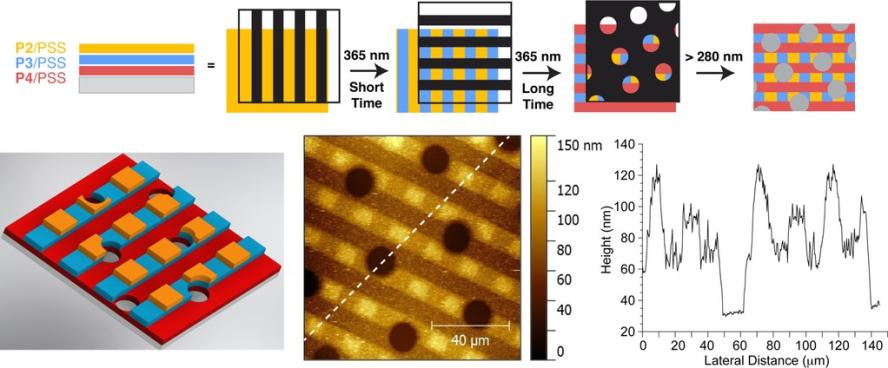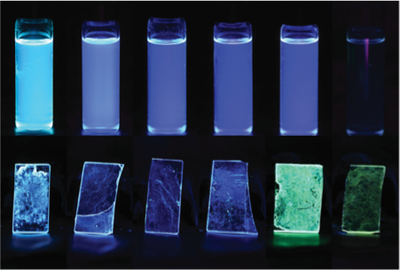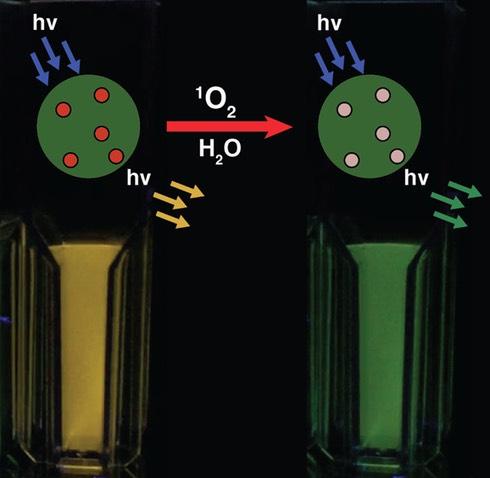Research
Our research has focused in three separate areas.
Photochemical Control of Charge
As interactions between charges dictate much of molecular behavior, controlling charge can yield control over matter. We have developed a series of materials in which light switches the charge-based interactions between polymer chains from attractive. By combining this top-down fabrication approach of with the bottom-up fabrication method of layer-by-layer assembly, we have developed thin films in which photochemical lability is confined to individual nanoscale compartments, yielding photo-delaminated free-standing films and multi-height photolithography.

Using Functional Side Chains to Control Conjugated Materials
Conjugated materials hold great promise for applications including solar cells and displays. We have focused on expanding the role of the side-chains of these materials, which occupy up to half of their mass but are typically reserved only for solubility. Early work in our group focused on integrating photolabile side chains for negative conjugated photoresists. This has evolved to using the non-covalent interactions of aromatic side-chains for controlling interactions between molecules, and therefore their material properties, including the use of mechanical force to control luminescence-mechanofluorochromism.



Singlet-Oxygen Responsive Materials
Singlet oxygen (1O2) is a critical reactive oxygen species in photodynamic therapy for cancer as well as in damage to plants upon overexposure to light. Its photochemical production is also chemically amplified through a photochemical reaction, which is the lynchpin of several commercial bioanalytical technologies. Through a combination of fundamental physical organic chemistry and materials chemistry, we have luminescent conjugated polymer nanoparticles as probes for 1O2 in water that shows improved limit of detection over the commercially available luminescent probe for 1O2.
